Warren Distinguished Lecture Series

The Warren Distinguished Lecture Series is made possible by a generous, renewing gift by Alice Warren Gaarden in 1961. Since 1989, we have been bringing in accomplished researchers and speakers from around the world to share their work with students, faculty, and friends of CEGE. Please join us for these lectures!
- Join us in person in the George J. Schroepfer Conference Theater, 210 Civil Engineering Building, Fridays at 10:10 a.m., unless otherwise noted. Coffee and refreshments served.
- Join us via Zoom. Registration is required. Link information will be sent when you register.
- Recordings are available on the CEGE YouTube channel, Warren Lecture Series playlist , where you can also search past lectures.
Upcoming Events
We wrap up the spring season on April 26 with the Robert Dexter Lecture with Dimitrios Lignos, Resilient Steel Structures Laboratory, École Polytechnique Fédérale de Lausanne (EPFL), Lausanne (Switzerland). The series will resume after a summer break.
There are no upcoming events matching your criteria.
Past Warren Lectures
A Universal Scaling Law for Gas Transfer Velocities across Complex Interfaces
Friday, Nov. 9, 2018, 10:10 a.m. through Friday, Nov. 9, 2018, 11:15 a.m.
George J. Schroepfer Conference Theater, 210 Civil Engineering Building

Gabriel Katul
Civil and Environmental Engineering, Duke University
ABSTRACT: Large-scale climate models commonly leave out an important ingredient. Katul describes the importance of turbulent eddies and how transfer velocities scale when considering the transfer of water vapor from rough surfaces into a turbulent atmosphere and other conditions. A large corpus of field and laboratory experiments support the finding that transfer velocities at interfaces subject to turbulent eddies scale as where 𝜈 is the kinematic viscosity and 𝜖 is the mean turbulent kinetic energy dissipation rate of eddies. This scaling appears to hold for marine and coastal systems, and across many other conditions. Katul explores the working hypothesis that this universal scaling is a direct outcome of the Kolmogorov inertial subrange energy content in eddies modified to include viscous-cutoff thereby by-passing the need for a surface renewal assumption. The connection between energy content in eddies (i.e., a microscopic state) and gas transfer velocities (i.e., macroscopic outcome) might be viewed as analogous to a fluctuation-dissipation relation but for turbulent flows.
The Mesoscopic Distinct Element Method for Computationally Guided Structural Nanomaterials Design
Friday, Nov. 2, 2018, 10:10 a.m. through Friday, Nov. 2, 2018, 11:15 a.m.
George J. Schroepfer Conference Theater, 210 Civil Engineering Building
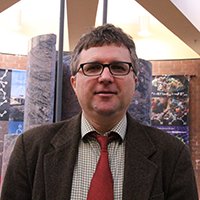
Traian Dumitrica
Mechanical Engineering, University of Minnesota
ABSTRACT: The Discrete Element Method (DEM) is the macroscopic method introduced by Peter Cundall and Otto Strack about 40 years ago for simulating the mechanics of geological materials. Dumitrica extends DEM to the meso-scale to enable simulations of the mechanics of carbon nanotube (CNT) composites. To illustrate the potential of the method at this small scale, Dumitrica focuses on recent results where mesoscopic-scale distinct element method (mDEM) simulations for the stretching of CNT networks are bringing fundamental understanding into the CNT yarn formation process. The parameters used by mDEM, including the mesoscale friction, are based on full atomistic results. By bridging across the atomistic and mesoscopic length scales, Dumitrica’s model accurately predicts the mechanical response of the network over a large deformation range. By varying the mesoscopic dissipation as well as the network structure, Dumitrica reveals that mesoscale friction and film morphology are key factors for the yarn formation. Dumitrica’s exploratory results anticipate that the bridging-of-the-scales approach pursued here for neat CNTs can be extended to include enhancement in dissipation caused by specific polymeric layers, and to simulate the different deformation regimes from polymer-specific impregnated CNT networks.
Topological Mechanical Metamaterials
Friday, Oct. 26, 2018, 10:10 a.m. through Friday, Oct. 26, 2018, 11:15 a.m.
George J. Schroepfer Conference Theater, 210 Civil Engineering Building
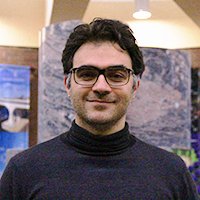
Vincenzo Vitelli
Physics and James Franck Institute, University of Chicago
ABSTRACT: One of the open challenges of modern material science is to create artificial structures with unconventional mechanical responses, which can be programmed by designing their geometry or topology. Such structures, termed mechanical metamaterials, can guide sound in controlled ways. When these properties are linked to a topological index, they robustly resist a wide range of perturbations. Vitelli exploits the principle of topological robustness to design linear and non-linear mechanical states whose spatial extent can be tuned from localized to extended by progressively closing the acoustic gap in the bulk structures, in analogy with their quantum counterparts. The topological design rules Vitelli uncovered will be demonstrated using macroscopic prototypes based on geared, origami-like, cellular structures. Vitelli next discusses how to build mechanical topological insulators using active liquids that flow spontaneously without external drive.
The Promise of Smart Materials in Earthquake Resistant Design
Friday, Oct. 19, 2018, 10:10 a.m. through Friday, Oct. 19, 2018, 11:15 a.m.
George J. Schroepfer Conference Theater, 210 Civil Engineering Building
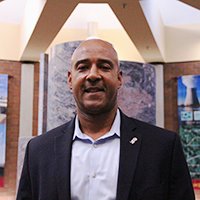
Reginald DesRoches
William and Stephanie Sick Dean of Engineering, Rice University
ABSTRACT: Damage from recent earthquakes underscores the importance of developing new approaches and technologies to improve the performance of structures during earthquakes. The presentation will highlight applications of one class of smart materials — shape memory alloys — in improving the performance of structures subjected to earthquake loading. Shape memory alloys belong to a class of smart materials that can undergo large deformations while reverting back to their original, undeformed shape. This unique property has led to the development of numerous applications in the biomedical, aerospace, and commercial industries. A multi-scale and multi-disciplinary approach is taken to explore the potential use of these materials for applications in earthquake engineering. Component testing, full-scale testing, and detailed analyses show great potential for shape memory alloys to significantly improve the earthquake performance of nonductile buildings and bridges.
Multi-Physics Couplings and Strain Localization in Seismic Faults
Friday, Oct. 12, 2018, 10:10 a.m. through Friday, Oct. 12, 2018, 11:15 a.m.
George J. Schroepfer Conference Theater, 210 Civil Engineering Building
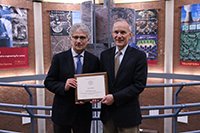
Jean Sulem
Ecole des ponts Paris Tech
ABSTRACT: Sulem’s research interests are related to constitutive modeling of geomaterials, experimental rock mechanics, thermo-hydro-mechanical behavior of geomaterials with applications to tunneling, petroleum engineering, deep geological storage, and fault mechanics. Sulem presents some recent results on analytical and numerical modeling of strain localization processes under multi-physical couplings. Thermo-chemo-mechanical couplings are more and more identified as factors that play a central role in the mechanical behavior and the evolution of localized deformation zones. Field observations of mature faults, i.e. those that have experienced large slip, show evidence that shear deformation is localized in a very narrow zone, a few millimeters in thickness. The width of the deforming zone is a key parameter, as narrow deforming zones concentrate the frictional heating, which leads to large temperature rises and thus to more rapid weakening. Important challenges and questions span from the qualitative understanding of the main phenomena to their quantitative description and observation. Sulem discusses the geophysical implications of these instabilities for earthquake nucleation.
The Microbiome as Engineering Tool
Friday, Oct. 5, 2018, 10:10 a.m. through Friday, Oct. 5, 2018, 11:15 a.m.
George J. Schroepfer Conference Theater, 210 Civil Engineering Building
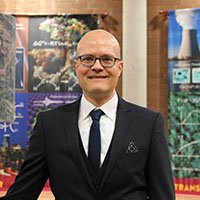
Sebastian Behrens
Civil, Environmental, and Geo- Engineering, University of Minnesota
ABSTRACT: Microbial communities underpin the biogeochemical cycles of the earth’s soil, oceans, and atmosphere, and they perform functions in natural and engineered ecosystems that impact all life on earth and provide service to society. Yet our ability to manage these communities is limited. Behrens argues that more direct monitoring and steering of microbial community processes is crucial for energy efficient wastewater treatment, healthy drinking water production, and successful bioremediation strategies. Behrens discusses examples of nitrification failure in wastewater treatment and metabolic interactions in a mixed microbial community that couples autotrophic iron oxidation to nitrate reduction. The key challenge is to convert this knowledge into effective engineering and steering of the microbiome to improve microbial community functions for useful purposes. Behrens outlines the need for continuous method development for high-throughput functional screening, cultivation, and targeted genomics applications for microbiome exploration. And he discusses current projects from his research group that will meet these needs.
Building State-of-the-Art Forecast Systems with the Ensemble Kalman Filter
Friday, Sept. 28, 2018, 10:10 a.m. through Friday, Sept. 28, 2018, 11:15 a.m.
George J. Schroepfer Conference Theater, 210 Civil Engineering Building

Jeff Anderson
University Corporation for Atmospheric Research
ABSTRACT: The development of numerical weather prediction was one of the great scientific and computational achievements of the last century. The best present-day numerical weather prediction systems have evolved over decades and feature model-specific assimilation systems built with nearly a person century of effort. Anderson describes the development of a community software facility for ensemble Kalman filter data assimilation, the Data Assimilation Research Testbed (DART). DART can produce high-quality weather predictions but can also be used to build a comprehensive forecast system for any prediction model and observations. Anderson describes the basic ensemble Kalman filter and applies it to simple example problems. Anderson presents heuristic extensions to the basic algorithm that are essential for large applications in a historical context. An ensemble forecast system can estimate model parameters, guide general model improvement, evaluate the quality of existing observations, and inform the design of future observing systems. Examples of these capabilities are provided for a variety of geophysical applications.
Seismic Design of Steel Building Structures: A Half-Century Perspective
Friday, Sept. 21, 2018, 10:10 a.m. through Friday, Sept. 21, 2018, 11:15 a.m.
George J. Schroepfer Conference Theater, 210 Civil Engineering Building

Chia-Ming Uang
Structural Engineering, University of California, San Diego
ABSTRACT: Seismic design of steel structures in the United States has made significant advances in the past half-century. The development can be broadly divided into three eras. Prior to 1985, the Uniform Building Code (UBC) provided limited design requirements, and these requirements were mainly “borrowed” from AISC plastic design requirements. The second era started with the 1988 UBC when both the ductility and capacity design concepts were introduced based on research conducted in the 1970s and 1980s. The beginning of the third era was marked by the 1994 Northridge earthquake, which profoundly impacted the research, design code development, and construction of not only moment frames but also other steel systems for seismic applications. Uang provides a historical overview and assessment of the development that lead to the modern ASCE 7 and AISC seismic design provisions.
Classical Continuum Mechanics – Limitations and New Developments
Friday, Sept. 14, 2018, 10:10 a.m. through Friday, Sept. 14, 2018, 11:15 a.m.
George J. Schroepfer Conference Theater, 210 Civil Engineering Building

Holm Altenbach
Institute of Mechanics, Otto von Guericke University, Magdeburg Germany
ABSTRACT: Continuum mechanics is a branch of mechanics that deals with the analysis of the mechanical behavior of materials modeled as a continuous manifold. Continuum mechanics models begin by introduction of three-dimensional (or less dimensional) Euclidean space. The points within this region are defined as material points with prescribed properties. Each material point is characterized by a position vector that is continuous in time. Thus, the body changes in a way that is realistic—globally invertible at all times and orientation preserving, so that the body cannot intersect itself as transformations which produce mirror reflections are not possible in nature. For the mathematical formulation, the model is also assumed to be twice continuously differentiable, so that differential equations describing the motion may be formulated. Finally, the kinematical relations, the balance equations, the constitutive equations, and the boundary and/or initial conditions have to be defined. Altenbach discusses some examples of solid deformable continua with regard to the basics and introduces advanced models of continuum mechanics.
Folding of Solids as a Constitutive Instability and Configurational Forces in Elastic Structures
Friday, April 27, 2018, 10:10 a.m. through Friday, April 27, 2018, 11:15 a.m.
George J. Schroepfer Conference Theater, 210 Civil Engineering Building
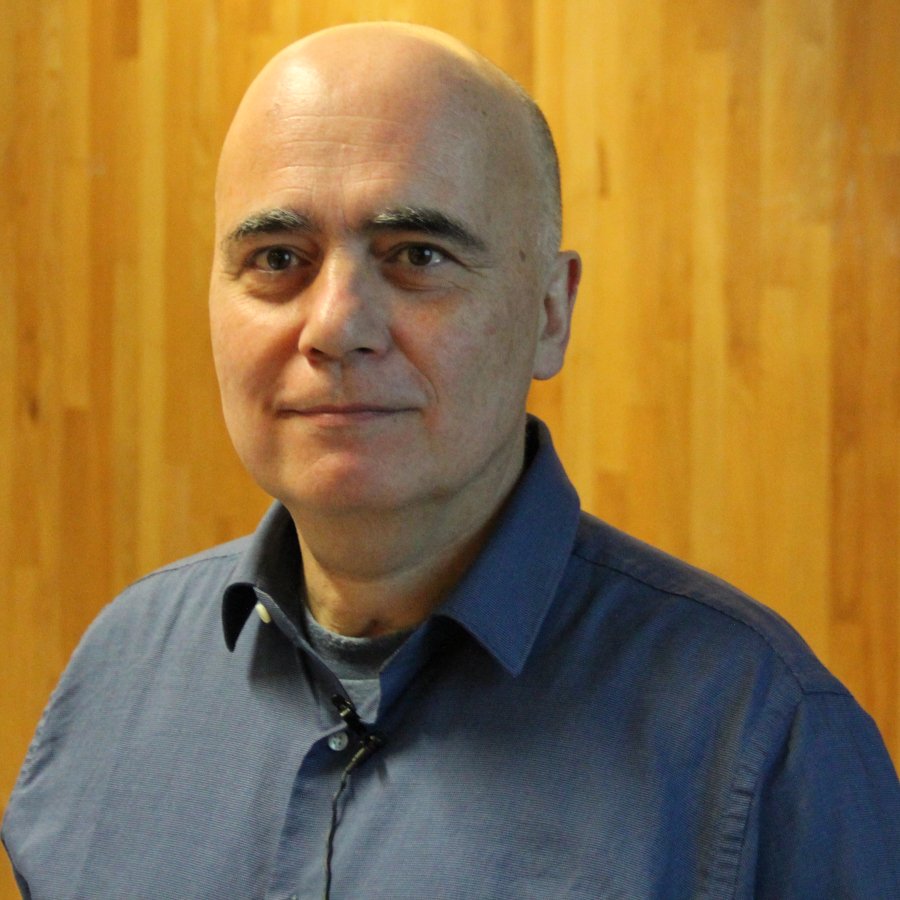
Davide Bigoni
Ingegneria Civile Ambientale e Meccanica Università di Trento, Italy
ABSTRACT: Davide Bigoni explores two problems, one of solid mechanics and one of structural mechanics, that address situations in which an elastic solid or structure is subject to extreme deformations. First, he presents the possibility of folding, as contrasted to bending, for a three-dimensional continuum. Folding is a process in which bending localizes into sharp corners separated by almost undeformed elements. Folding is rarely encountered in nature and is difficult to describe within the realm of the Cauchy theory of elasticity. On the other hand, Bigoni shows that folding can be understood as a constitutive instability of a constrained-Cosserat elastic material occurring at the elliptic boundary. The second problem addresses the possibility of generating Eshelby-like, or "configurational," forces in elastic structures. In particular, the nonlinear theory of elastic rods as a framework for describing configurational forces analogous, for instance, to those acting on dislocations in solids.